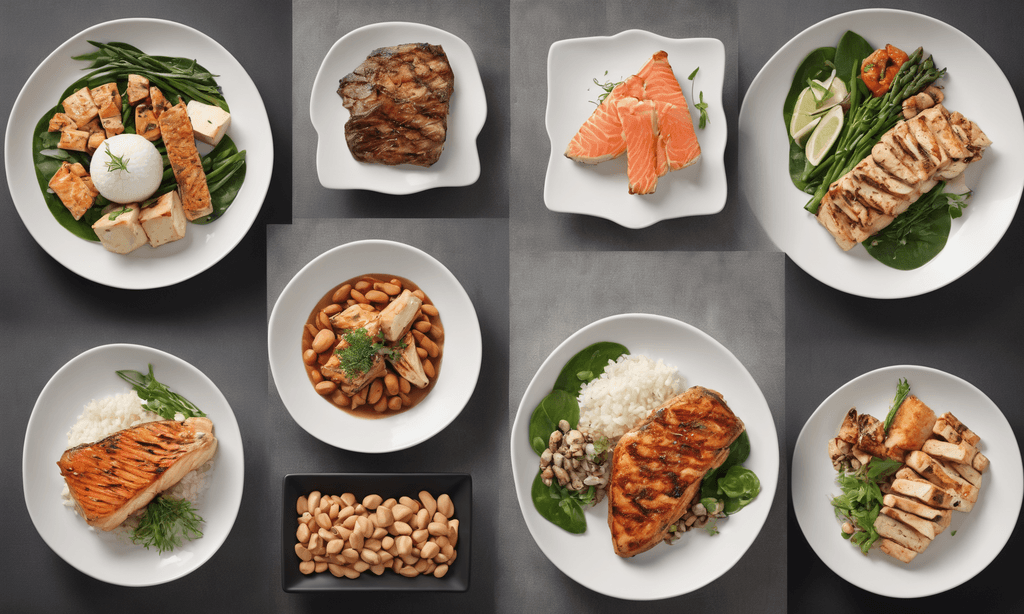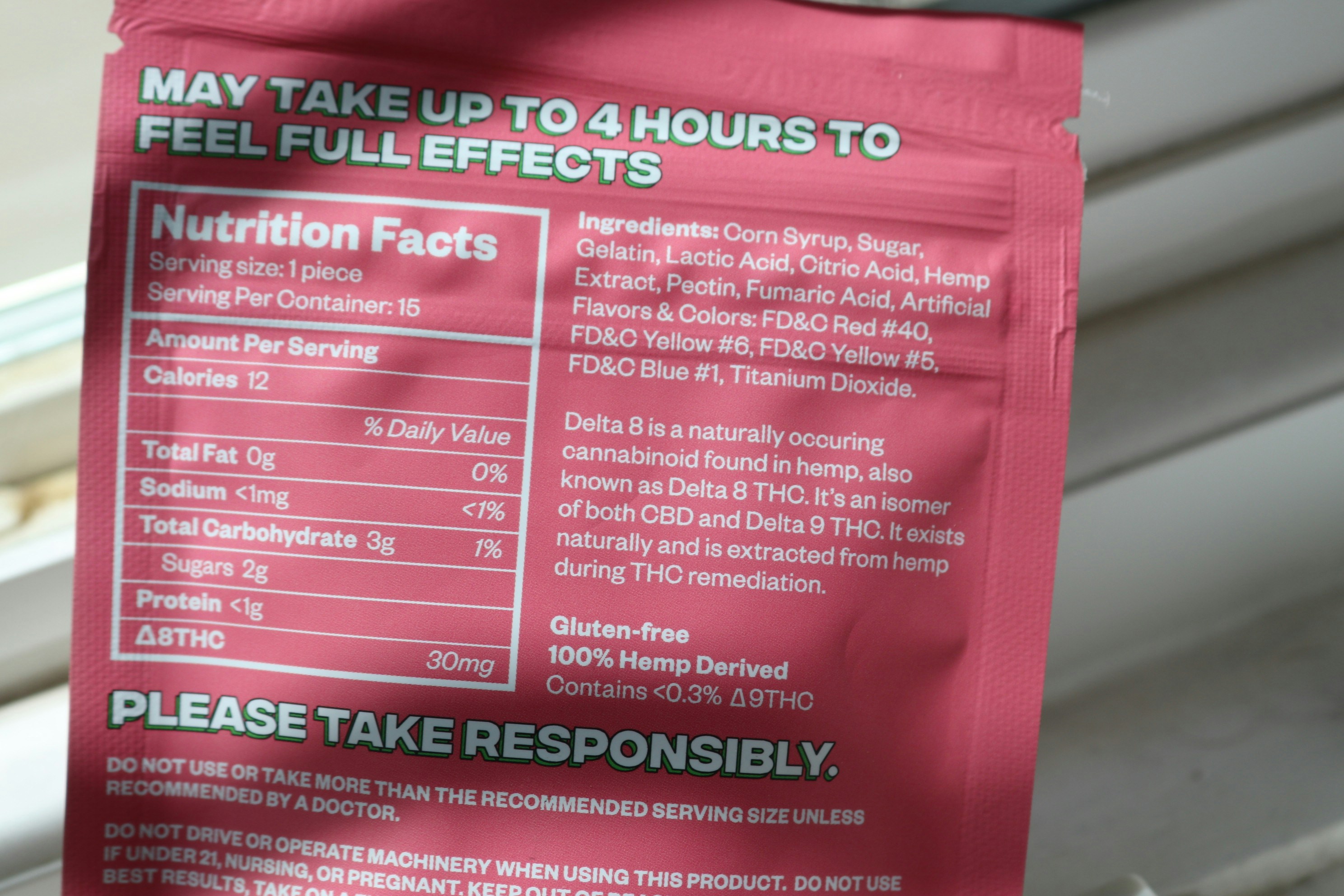


The Ultimate Guide to Packing Lunch for Work
Last updated: Feb 13, 2024
Nutrition
Navigating a busy workweek often means lunch becomes an afterthought. However, with some foresight and a touch of creativity, prepping your office lunches can not only be straightforward but also a delightful highlight of your day. Here's how to turn lunch prep from a chore into a simple, enjoyable part of your weekly routine, complete with practical examples.
Embrace Batch Cooking
Batch cooking is your best friend when it comes to meal prep. Dedicate a few hours on your off day to cook large quantities of versatile ingredients. Think grains like quinoa or brown rice, proteins such as chicken breast, tofu, or beans, and a variety of roasted or steamed vegetables. These can easily be mixed and matched to create different meals throughout the week, ensuring you don't get bored while keeping your nutrition on point.
Plan Your Meals
Planning is crucial. At the start of each week, take some time to decide what you'll be eating for lunch each day. This doesn't mean you need to stick to the same meal five days in a row. Instead, plan for variety by preparing a couple of different protein options, a selection of veggies, and various carbs. Use spices, herbs, and dressings to add unique flavors to each dish.
Build Your Base with Mix and Match Components
Creating a mix-and-match system ensures variety and flexibility. Here’s how to apply it:
Proteins: Grilled chicken, baked salmon, chickpeas, hard-boiled eggs, and tofu.
Grains/Starches: Quinoa, brown rice, sweet potatoes, whole wheat pasta, and couscous.
Vegetables: Spinach, kale, mixed salad greens, roasted vegetables (broccoli, cauliflower, brussels sprouts), and raw veggies for crunch (carrots, bell peppers, cucumbers).
Extras: Nuts, seeds, dried fruits, cheeses, and a variety of dressings or sauces (tahini, pesto, vinaigrette).
Example Combinations:
Salad Bowl: Mix kale, roasted sweet potatoes, grilled chicken, avocado, pumpkin seeds, and cranberries. Drizzle with a balsamic vinaigrette.
Grain Bowl: Combine quinoa, sautéed spinach, baked salmon, and sliced almonds, and top with a dollop of yogurt-dill sauce.
Veggie Delight: Fill your box with a colorful array of raw veggies (carrot sticks, cucumber slices, cherry tomatoes), hummus for dipping, and a side of couscous salad with lemon-parsley dressing.
The Secret Sauce: Dressings and Dips
Transform your meals with a rotation of homemade or store-bought dressings and dips. A few versatile options include:
Lemon Tahini Dressing: Perfect for drizzling over salads or grain bowls.
Greek Yogurt Herb Dip: Great with raw veggies or grilled meats.
Spicy Mango Salsa: Adds a kick to wraps or rice bowls.
Creamy Avocado Dressing: Blend ripe avocado with lime juice, garlic, and cilantro.
Spicy Peanut Sauce: Mix peanut butter with soy sauce, honey, and chili flakes.
Tips for Keeping Lunches Fresh
Invest in Quality Containers: Good containers keep ingredients separate until you're ready to eat. Look for options with compartments or invest in small sauce containers for dressings.
Prep Ingredients, Not Meals: By prepping just the components, you have the freedom to assemble meals the night before, keeping everything fresher.
Dressings on the Side: Always pack dressings and sauces separately to avoid soggy salads and bowls. This also lets you control the flavor intensity at mealtime.
Conclusion
With a mix-and-match approach to your work lunches, you’ll unlock endless possibilities that keep your taste buds happy and your body nourished. This strategy not only makes meal prep more manageable but also infuses creativity and excitement into your lunchtime routine. Start with a few staple ingredients in each category and enjoy the process of discovering new favorite combinations that keep lunchtime interesting.
Navigating a busy workweek often means lunch becomes an afterthought. However, with some foresight and a touch of creativity, prepping your office lunches can not only be straightforward but also a delightful highlight of your day. Here's how to turn lunch prep from a chore into a simple, enjoyable part of your weekly routine, complete with practical examples.
Embrace Batch Cooking
Batch cooking is your best friend when it comes to meal prep. Dedicate a few hours on your off day to cook large quantities of versatile ingredients. Think grains like quinoa or brown rice, proteins such as chicken breast, tofu, or beans, and a variety of roasted or steamed vegetables. These can easily be mixed and matched to create different meals throughout the week, ensuring you don't get bored while keeping your nutrition on point.
Plan Your Meals
Planning is crucial. At the start of each week, take some time to decide what you'll be eating for lunch each day. This doesn't mean you need to stick to the same meal five days in a row. Instead, plan for variety by preparing a couple of different protein options, a selection of veggies, and various carbs. Use spices, herbs, and dressings to add unique flavors to each dish.
Build Your Base with Mix and Match Components
Creating a mix-and-match system ensures variety and flexibility. Here’s how to apply it:
Proteins: Grilled chicken, baked salmon, chickpeas, hard-boiled eggs, and tofu.
Grains/Starches: Quinoa, brown rice, sweet potatoes, whole wheat pasta, and couscous.
Vegetables: Spinach, kale, mixed salad greens, roasted vegetables (broccoli, cauliflower, brussels sprouts), and raw veggies for crunch (carrots, bell peppers, cucumbers).
Extras: Nuts, seeds, dried fruits, cheeses, and a variety of dressings or sauces (tahini, pesto, vinaigrette).
Example Combinations:
Salad Bowl: Mix kale, roasted sweet potatoes, grilled chicken, avocado, pumpkin seeds, and cranberries. Drizzle with a balsamic vinaigrette.
Grain Bowl: Combine quinoa, sautéed spinach, baked salmon, and sliced almonds, and top with a dollop of yogurt-dill sauce.
Veggie Delight: Fill your box with a colorful array of raw veggies (carrot sticks, cucumber slices, cherry tomatoes), hummus for dipping, and a side of couscous salad with lemon-parsley dressing.
The Secret Sauce: Dressings and Dips
Transform your meals with a rotation of homemade or store-bought dressings and dips. A few versatile options include:
Lemon Tahini Dressing: Perfect for drizzling over salads or grain bowls.
Greek Yogurt Herb Dip: Great with raw veggies or grilled meats.
Spicy Mango Salsa: Adds a kick to wraps or rice bowls.
Creamy Avocado Dressing: Blend ripe avocado with lime juice, garlic, and cilantro.
Spicy Peanut Sauce: Mix peanut butter with soy sauce, honey, and chili flakes.
Tips for Keeping Lunches Fresh
Invest in Quality Containers: Good containers keep ingredients separate until you're ready to eat. Look for options with compartments or invest in small sauce containers for dressings.
Prep Ingredients, Not Meals: By prepping just the components, you have the freedom to assemble meals the night before, keeping everything fresher.
Dressings on the Side: Always pack dressings and sauces separately to avoid soggy salads and bowls. This also lets you control the flavor intensity at mealtime.
Conclusion
With a mix-and-match approach to your work lunches, you’ll unlock endless possibilities that keep your taste buds happy and your body nourished. This strategy not only makes meal prep more manageable but also infuses creativity and excitement into your lunchtime routine. Start with a few staple ingredients in each category and enjoy the process of discovering new favorite combinations that keep lunchtime interesting.
Navigating a busy workweek often means lunch becomes an afterthought. However, with some foresight and a touch of creativity, prepping your office lunches can not only be straightforward but also a delightful highlight of your day. Here's how to turn lunch prep from a chore into a simple, enjoyable part of your weekly routine, complete with practical examples.
Embrace Batch Cooking
Batch cooking is your best friend when it comes to meal prep. Dedicate a few hours on your off day to cook large quantities of versatile ingredients. Think grains like quinoa or brown rice, proteins such as chicken breast, tofu, or beans, and a variety of roasted or steamed vegetables. These can easily be mixed and matched to create different meals throughout the week, ensuring you don't get bored while keeping your nutrition on point.
Plan Your Meals
Planning is crucial. At the start of each week, take some time to decide what you'll be eating for lunch each day. This doesn't mean you need to stick to the same meal five days in a row. Instead, plan for variety by preparing a couple of different protein options, a selection of veggies, and various carbs. Use spices, herbs, and dressings to add unique flavors to each dish.
Build Your Base with Mix and Match Components
Creating a mix-and-match system ensures variety and flexibility. Here’s how to apply it:
Proteins: Grilled chicken, baked salmon, chickpeas, hard-boiled eggs, and tofu.
Grains/Starches: Quinoa, brown rice, sweet potatoes, whole wheat pasta, and couscous.
Vegetables: Spinach, kale, mixed salad greens, roasted vegetables (broccoli, cauliflower, brussels sprouts), and raw veggies for crunch (carrots, bell peppers, cucumbers).
Extras: Nuts, seeds, dried fruits, cheeses, and a variety of dressings or sauces (tahini, pesto, vinaigrette).
Example Combinations:
Salad Bowl: Mix kale, roasted sweet potatoes, grilled chicken, avocado, pumpkin seeds, and cranberries. Drizzle with a balsamic vinaigrette.
Grain Bowl: Combine quinoa, sautéed spinach, baked salmon, and sliced almonds, and top with a dollop of yogurt-dill sauce.
Veggie Delight: Fill your box with a colorful array of raw veggies (carrot sticks, cucumber slices, cherry tomatoes), hummus for dipping, and a side of couscous salad with lemon-parsley dressing.
The Secret Sauce: Dressings and Dips
Transform your meals with a rotation of homemade or store-bought dressings and dips. A few versatile options include:
Lemon Tahini Dressing: Perfect for drizzling over salads or grain bowls.
Greek Yogurt Herb Dip: Great with raw veggies or grilled meats.
Spicy Mango Salsa: Adds a kick to wraps or rice bowls.
Creamy Avocado Dressing: Blend ripe avocado with lime juice, garlic, and cilantro.
Spicy Peanut Sauce: Mix peanut butter with soy sauce, honey, and chili flakes.
Tips for Keeping Lunches Fresh
Invest in Quality Containers: Good containers keep ingredients separate until you're ready to eat. Look for options with compartments or invest in small sauce containers for dressings.
Prep Ingredients, Not Meals: By prepping just the components, you have the freedom to assemble meals the night before, keeping everything fresher.
Dressings on the Side: Always pack dressings and sauces separately to avoid soggy salads and bowls. This also lets you control the flavor intensity at mealtime.
Conclusion
With a mix-and-match approach to your work lunches, you’ll unlock endless possibilities that keep your taste buds happy and your body nourished. This strategy not only makes meal prep more manageable but also infuses creativity and excitement into your lunchtime routine. Start with a few staple ingredients in each category and enjoy the process of discovering new favorite combinations that keep lunchtime interesting.
Stay informed
Sign up for our newsletter to receive wellness content and updates related to Amelia.
Sign up for our newsletter to receive wellness content and updates related to Amelia.
More content



The Power of Protein



Making Sense of Nutrition Labels



Healthy Snacking Options: Ideas for Nutritious and Satisfying Snacks.



Understanding the Impact of Your Menstrual Cycle on Strength Performance



How Menstrual Cycle Impacts on Your Overall Wellness



Your Essential Health and Fitness Guide: Cutting Through the Noise